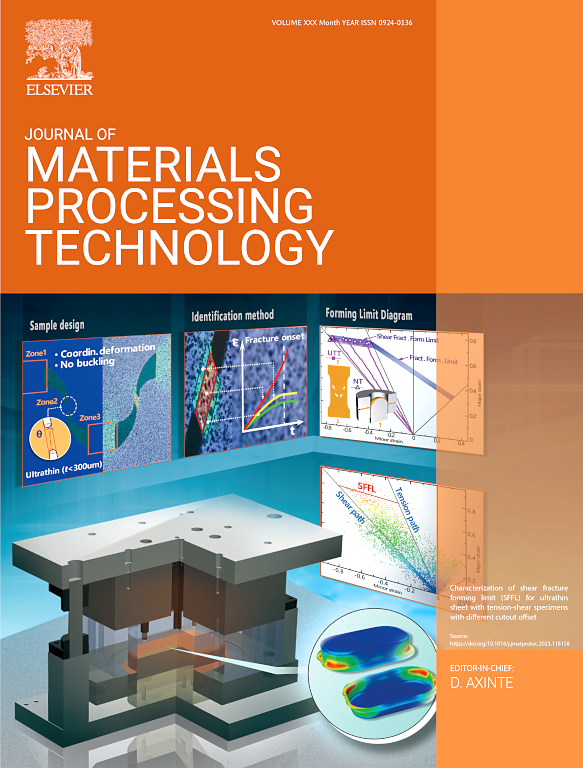Advances in mechanism and application of diffusion bonding of titanium alloys
IF 6.7
2区 材料科学
Q1 ENGINEERING, INDUSTRIAL
Journal of Materials Processing Technology
Pub Date : 2025-01-14
DOI:10.1016/j.jmatprotec.2025.118736
引用次数: 0
Abstract
Diffusion bonding (DB) has emerged as a prevalent and versatile materials processing technique for titanium (Ti) alloy parts and composites, producing high-quality joints and supporting continuous manufacturing. The diffusion bonding procedure has gained significant attention in producing complex components for the electronics and aerospace industries, especially the bonding of dissimilar materials. A comprehensive understanding of the diffusion bonding of titanium and its alloys is valuable in guiding future research endeavors. However, to our knowledge, no one has reported a systematic overview of this topic. Herein, a comprehensive overview of the diffusion bonding for titanium and its alloys was provided. Firstly, the diffusion bonding processing theory, void closure criterion, and atomic interdiffusion were revealed. Secondly, the existing knowledge on the microstructural evolution and joint properties in titanium materials and the recent research progress was summarized. Thirdly, extending the improvements and engineering applications of the diffusion bonding process responses to the emergence of advanced materials and the increasing demand for application environments. Lastly, the current challenges in studying the diffusion bonding of titanium and its alloys were identified and discussed. This review provides useful insight into understanding and developing a high-performance novel diffusion bonding process.
求助全文
约1分钟内获得全文
求助全文
来源期刊

Journal of Materials Processing Technology
工程技术-材料科学:综合
CiteScore
12.60
自引率
4.80%
发文量
403
审稿时长
29 days
期刊介绍:
The Journal of Materials Processing Technology covers the processing techniques used in manufacturing components from metals and other materials. The journal aims to publish full research papers of original, significant and rigorous work and so to contribute to increased production efficiency and improved component performance.
Areas of interest to the journal include:
• Casting, forming and machining
• Additive processing and joining technologies
• The evolution of material properties under the specific conditions met in manufacturing processes
• Surface engineering when it relates specifically to a manufacturing process
• Design and behavior of equipment and tools.
 求助内容:
求助内容: 应助结果提醒方式:
应助结果提醒方式:


